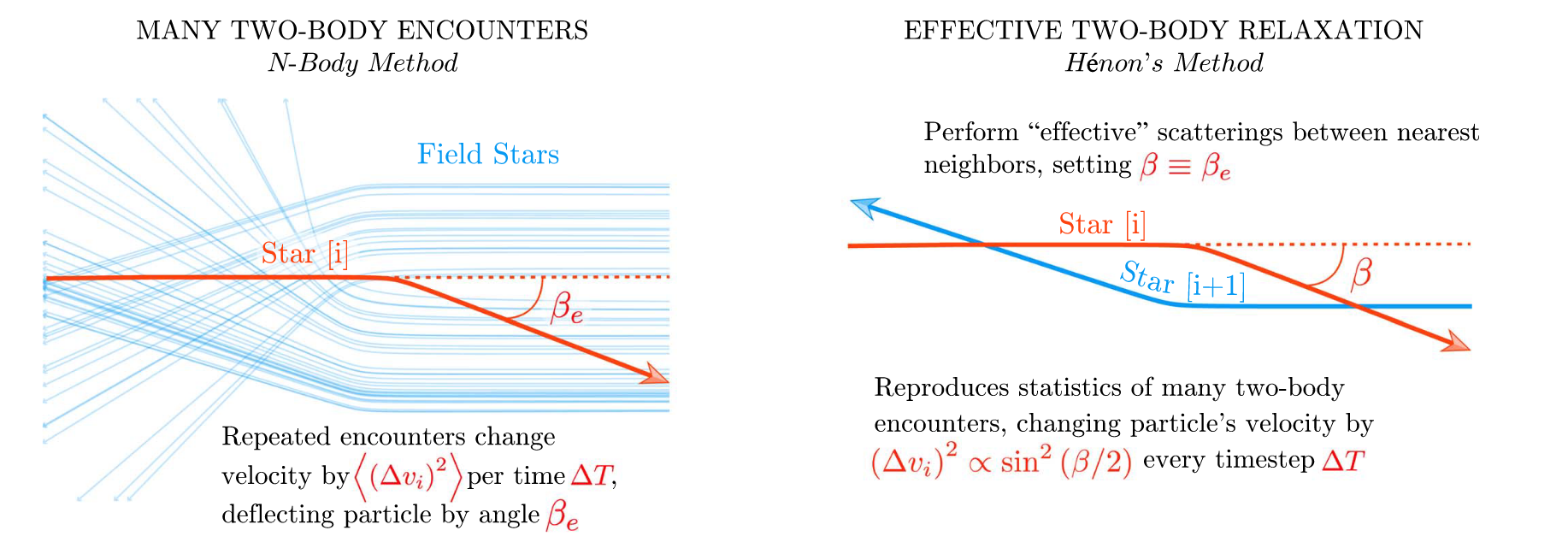
After several years of work that started before I was an assistant prof, we have the first public release of the Cluster Monte Carlo code, CMC. The paper is available here while the code itself is available here. CMC is a Monte Carlo technique for stellar dynamics, based on an aproach developed by Hénon in 1971. Instead of integrating the force of every particle on every other particle, Hénon’s approach was to model the effect of many two-body encounters as single “effective” encounters.
Essentially, the nearest neighbor to each particle is considered as a fair draw from the local distribution function at that point in the cluster, allowing us to calculate the statistical change in the particle’s energy and angular momentum on a relaxation timescale. And because the encounters are performed between nearest neighbors, the approach can be expanded to include strong encounters, such as physical collisions, tidal/GW captures, binary encounters and more:

The public release here is also pinned as a git submodule to the COSMIC code for population synthesis. Any changes to COSMIC are immediately propagated to CMC. This was probably the most complicated part of the release, and involved porting all of our initial condition generators for various clusters over to COSMIC. But the upside is, we can create realistic models of star clusters with realistic stellar light curves:
This code was originally started by Fred Rasio and his group nearly 20 years ago (my contributions started about 10 years ago). And it’s been updated by several generation of students and postdocs: Kriten Joshi, Atakan Gürkan, John Fregeau, Sangamitra Goswami, Sourav Chatterjee, Maggie Morscher, Stefan Umbriet, Kyle Kremer, Claire Ye, and more. Several of us have spent the last 2 years getting it ready for public release. Hopefully it can prove useful!
